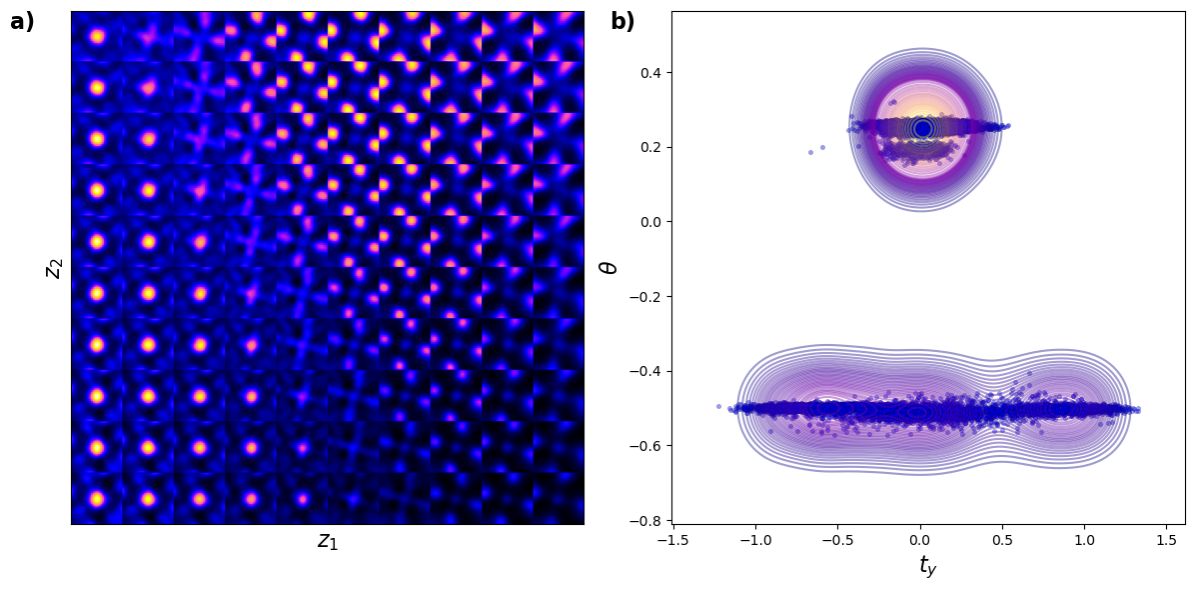Contents
Translationally and Rotationally Invariant VAE
In this section, we incorporate all invariances—both translational and rotational—within the VAE framework.
Source:trVAE
The observed well-defined clusters strongly suggest the presence of underlying physical principles governing the system. These clusters likely correspond to distinct physical or structural features such as:
- Variations in chemical composition or atomic arrangements.
- Differences in polarization states, including translational components (, ) and rotational states .
- Manifestation of lattice distortions or domain wall structures that produce spatial correlations in the data.
Source:trVAE
The map now clearly reveals chemical and mistilt effects, while the translational components, and , exhibit a pattern consistent with the polarization components. Furthermore, the angle variable captures the rotational aspect of the polarization.



